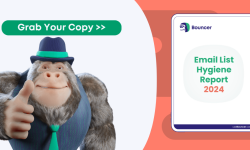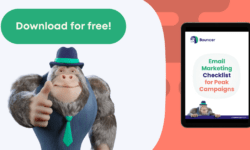When it comes to marketing, one size rarely fits all. The secret sauce lies in delivering the right message to the right people—and that’s where segmentation comes in. Think of it as organizing your audience into meaningful groups so you can speak directly to their unique needs and interests. Let’s dive into nine practical segmentation strategies that can help you refine your targeting, boost engagement, and ultimately drive better results.
1. Demographic Segmentation
Start with the basics. Demographic segmentation involves dividing your audience by age, gender, income, education, and similar factors. It’s a straightforward approach that can offer immediate insights. For instance, if you’re marketing a premium skincare product, targeting a higher income bracket might make sense. By understanding who your customers are, you can tailor your messaging in a way that resonates with their lifestyle and preferences.
Example: A fashion retailer might send different collections to millennials compared to baby boomers, ensuring the styles, language, and even the visuals speak directly to each group.
2. Geographic Segmentation
Location matters. Geographic segmentation focuses on where your customers live, whether that’s by country, region, city, or even climate zone. Localizing your message can be especially powerful if your product or service has regional relevance. Imagine a campaign that adapts its messaging for customers in the U.S. versus those in Europe—highlighting local trends, cultural nuances, or even weather-related promotions.
Example: A restaurant chain might run region-specific menus or offers based on local tastes and seasonal ingredients, ensuring each message feels tailored to that community.
3. Psychographic Segmentation
This strategy goes beyond basic demographics and delves into the lifestyle, values, interests, and attitudes of your audience. Psychographic segmentation is all about understanding what makes your customers tick on a deeper level. When you know your audience’s hobbies, beliefs, or even political leanings, you can create campaigns that resonate on a personal, almost emotional level.
Example: A fitness brand might target health-conscious individuals with motivational content and community-building initiatives that emphasize a shared commitment to wellness and self-improvement.
4. Behavioral Segmentation
Actions speak louder than words. Behavioral segmentation categorizes your audience based on how they interact with your brand—purchasing habits, browsing behavior, and engagement patterns. This strategy is particularly useful for tailoring follow-up messages. For instance, if a customer frequently visits your website but hasn’t made a purchase, a targeted discount or a personalized recommendation might be just what they need to convert.
Example: An online bookstore might segment readers based on the genres they frequently explore and send personalized recommendations or exclusive previews for new releases in their favorite categories.
5. Firmographic Segmentation
For B2B marketers, firmographic segmentation is key. This strategy involves dividing companies based on characteristics like industry, company size, revenue, or even the number of employees. Understanding the organizational structure and needs of your business customers can help you craft messages that address specific challenges and goals unique to each segment.
Example: A SaaS provider might create distinct campaigns for startups, mid-sized companies, and large enterprises—each one highlighting features that solve pain points relevant to that segment.
6. Customer Journey Stage Segmentation
Not all customers are at the same point in their journey. Segmenting your audience by where they are in the sales funnel—whether they’re at the awareness, consideration, or decision stage—allows you to customize your messaging accordingly. Early-stage prospects might need educational content, while those closer to conversion might appreciate detailed product demos or testimonials.
Example: An escape room business could send an introductory email series to new leads highlighting the benefits of immersive challenges, followed by case studies and success stories as the leads move closer to making a purchase decision.
7. Purchase History Segmentation
Your customers’ past behavior can be a goldmine of insights. By segmenting based on purchase history, you can identify loyal customers, frequent buyers, and even those who haven’t purchased in a while. Tailoring your messaging to these groups can lead to more effective re-engagement strategies, upselling opportunities, and personalized loyalty programs.
Example: A popular SEO tool might offer exclusive discounts to repeat customers or re-engagement campaigns for those who haven’t shopped in a while, using their past purchase data to suggest new features they might like.
8. Engagement Level Segmentation
Some customers are more engaged than others. Whether it’s through email open rates, social media interactions, or website visits, engagement level segmentation helps you pinpoint which leads are hot and which ones need a little extra nurturing. This strategy allows you to create dynamic campaigns that adjust based on how your audience is interacting with your content.
Example: A digital marketing agency might use engagement data to send personalized follow-up emails to prospects who regularly click on their blog posts, while offering more introductory content to those with lower engagement levels.
Example 2: An ecommerce company running a referral program can use engagement level segmentation to maximize participation. For instance, using ReferralCandy, they can identify their most engaged users—those who make repeat purchases or actively refer friends—and offer them exclusive incentives, such as higher-tier rewards or early access to new features.
9. Technographic Segmentation
In today’s digital age, understanding the technology your audience uses can give you a competitive edge. Technographic segmentation divides your audience based on the devices, software, and platforms they prefer. This is especially relevant for companies in the tech industry, where the way customers interact with technology can heavily influence their buying decisions.
Example: A mobile app developer might tailor their marketing messages based on whether users are primarily on iOS or Android, ensuring that features and updates are communicated in the most relevant context.
Final Thoughts
At the end of the day, segmentation is all about delivering the right message to the right people at the right time. By implementing these nine segmentation strategies, you can create a more focused, personalized, and effective marketing approach. Whether you’re refining your campaigns with demographic data, tapping into behavioral patterns, or even leveraging technographic insights, the goal remains the same: to build stronger connections with your audience and drive better results.
Think of segmentation as your secret weapon—it not only improves the relevance of your messaging but also enhances the overall customer experience, making every interaction more meaningful. So go ahead, dive into your data, and start segmenting. Your audience is waiting for a message that feels like it was crafted just for them. Happy targeting!


